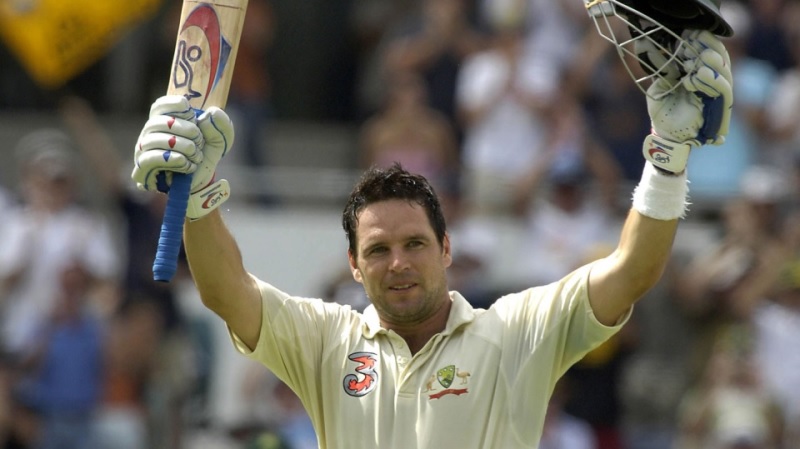Do Australia’s batting stocks resemble old Mother Hubbard’s cupboard or is there a gold nugget about to shine?
Paul Ryan | October 10, 2023

Cast your eyes over the statistics from batters around Australia from the late 1980s, 1990s and early 2000s.
It was a time Australia dominated Test cricket and had so many players within our history now considered greats of the game.
Behind every great team and player there should always be other players knocking on the door, scoring the runs, and taking the wickets to be ready and capable to come into to the team and maintain the standards and continuity of a winning team.
The Australia’s first-class cricket scene “The Sheffield Shield” had so many other players.
From a batting perspective.
Stuart Law – 27,080 runs at an average of 50.52 with 79 hundreds
Jamie Siddons – 11,587 runs at an average of 44.91 with 35 hundreds
Jamie Cox – 18,614 runs at an average of 42.69 with 51 hundreds
Brad Hodge – 17,084 at an average of 48.81 with 51 hundreds.
Martin Love – 16,952 at an average 49.85 with 45 hundreds.
All up, they scored 91, 317 first-class runs and a total of 261 hundreds.
Incredibly, of the 5, only 3 played a total 12 test matches for Australia. Brad Hodge (pictured after scoring a double hundred against South Africa) played 6 tests and averaged 55 in Test cricket. Martin Love played 5 tests and averaged 46.60 whilst Stuart Law only played one test and was 54 not out in his only innings.
David Warner has played 109 test matches and has said that he’d like to finish his test career after the 3rd test against Pakistan at the SCG in early January 2024.
It will mean sometime before now and then the Australian selectors are going to have to find a replacement opening batter.
Is it a little cheeky to say Australia future batting stocks resemble ‘old Mother Hubbard’ cupboard.’
Before we look at a possible replacement for Warner, we should also have a clear view of what the future may look like as Usman Khawaja is 36 years of age and Steve Smith is 34.
If you look at the first-class careers to date of the top 6 batters plus Cameron Green in the last Ashes test at the Oval in July 2023.
Usman Khawaja (36 yrs) – 193 first class games averaging 44.68 with 39 hundreds.
David Warner (36 yrs) – 140 first class games averaging 45.40 with 33 hundreds.
Marnus Labuschagne (29yrs) – 139 first class games averaging 46.84 with 30 hundreds.
Steve Smith (34 yrs) – 164 first class games averaging 55.54 with 48 hundreds.
Travis Head (29 yrs) – 154 first class games averaging 40.93 with 21 hundreds.
Mitchell Marsh (31 yrs) – 108 first class games averaging 33.57 with 13 hundreds.
Cameron Green (24 yrs) – 24 first class games averaging 46.09 with 9 hundreds.
All batters except Marsh average 40 or above in first class cricket.
So, who in the “Sheffield Shield” is scoring the runs to be ready and capable to come into to the Australian Test team and maintain the standards of averaging more than 40 to help Australian win test matches.
I don’t profess to know all the batters in contention, so I’ll choose some batters from each state who I’ve read about, watched a bit, and have played Tests or Australia A games.
Queensland
Matt Renshaw (27 yrs) - 101 first class games averaging 38.38 with 19 hundreds. Played 14 Tests
Bryce Street (25 yrs) – 33 first class games averaging 35.49 with 6 hundreds.
Wicket Keeper
Jimmy Peirson (30yrs) – 107 first class games averaging 35.08 with 7 hundreds.
New South Wales
Kurtis Patterson (30 yrs) – 95 first class games averaging 37.01 with 11 hundreds.
Daniel Hughes (24 yrs) – 69 games averaging 38.10 with 8 hundreds.
Moises Henriques (36 yrs) – 119 first class games averaging 35.98 with 13 hundreds. Played 4 Tests
Jack Edwards (23 yrs) – 23 first class games averaging 26.97 with 2 hundreds.
Jason Sangha (24 yrs) – 35 games averaging 28.13 with 4 hundreds.
Ryan Hackney (24 yrs) 6 first class games averaging 28.40 with 1 hundred.
I’d like to mention a player in NSW who’s only 28 years of age and has played 13 first class games for NSW and averages 39.66 with 1 hundred.
Daniel Solway has also scored something like 24 first grade hundreds in NSW Premier Cricket. It’s a funny old game cricket as Daniel hasn’t played first class cricket since March 2021 yet has the highest first-class average than any current player in NSW outside the test players.
Victoria
Peter Handscomb (32 yrs) – 161 first class games averaging 38.95 with 21 hundreds. Played 20 Tests
Will Pucovski (25 yrs) – 30 first class games averaging 47.60 with 6 hundreds.
Campbell Kellaway (20 yrs) – 12 first class games averaging 24.6 with no hundreds.
Tasmania
Tim Ward (25yrs) – 23 first class games averaging 34.1 with 1 hundred.
Calen Jewell (26 yrs) – 33 first class games averaging 33.66 with 5 hundreds.
Jordan Silk (31 yrs) – 83 first class games averaging 32.3 with 10 hundreds.
South Australia
Henry Hunt (26 yrs) – 38 first class games averaging 33.3 with 7 hundreds.
Jake Lehmann (31 yrs) – 72 first class games averaging 35.3 with 10 hundreds.
Nathan McSweeney (24 yrs) – 20 first class games averaging 29.80 with 2 hundreds.
Western Australia
Cameron Bancroft (30 yrs) – 140 first class innings averaging 38.65 with 24 hundreds. 10 Tests
Sam Whiteman (31yrs) – 97 first class games averaging 36.57 with 12 hundreds.
Aaron Hardie (24 yrs) – 27 first class games averaging 42.81 with 3 hundreds.
Teague Wyllie (19 yrs) – 15 first class games averaging 27.73 with 1 hundred.
Wicket Keeper
Josh Inglis (28 yrs) 52 first class averaging 32.88 with 4 hundreds.
There was a time when it was said you needed to average above 40 in first class cricket to be even in the discussion for a test batting spot.
You really could forgive Law, Siddons, Cox, Love and Hodge for a moment or two of wondering.
Sam Konstas (NSW), Harry Dixon (Vic), Harjas Singh (NSW), Harry Weibgen (QLD), Ryan Hicks (NSW), Corey Walsey (WA) have all just returned from the Australian Under 19 tour to England. The world of cricket is on offer, just don't be happy averaging mid to late 30s.
So, here’s my question - is the cupboard bare or should coaches especially in the pathway systems spend less time encouraging players to clear the front leg and start coaching young batters the benefits of a solid technique, playing straight, batting time, and building an innings?
Australian batters may score the runs needed to win at home, but can they stand up against India (home and away) and away against the other test paying nations.
Leading into the 5 Test series against India in Australia in 2024/25 Australia play 3 tests against Pakistan and 2 tests against West Indies in December and January 2023-24. They then play a 2-test series v New Zealand in New Zealand in February and March 2024.
That’s 7 tests between now and the start of the first test against India in December 2024.
Whatever the selectors decide for the first 3 tests against Pakistan I’m hoping with the experience of Labuschagne, Smith and Head at 3, 4 and 5, Matt Renshaw and Teague Wyllie are opening the batting for Australia in the first test v West Indies in January 2024.
Renshaw at 27 is coming into his prime and has scored a test century and whilst only 19, I’m taking a punt on Teague Wyllie. He’s obviously not deserving at this stage of the summer but I’m backing the systems and culture in WA cricket, and he looks to have the technique to be a long-term successful player. He also has youth on his side to benefit greatly from playing alongside Steve Smith.


Interesting thoughts Paul. What struck me in your piece is that Stuart Law, Jamie Siddons, Jamie Cox, Brad Hodge, and Martin Love were really Test-class players plying their craft in the Sheffield Shield season after season. Imagine what that did for the standard of play in the Shield as the stepping stone to Test cricket? A similar exercise for bowlers would be an interesting comparison. So many good bowlers played against that line up but never really cracked the Test team. Injuries and rotation may have meant more opportunity for Shield performers to earn a Test spot. There is also a good argument that Australia's dominance in the 1990s and early 2000s was due to selectors respecting the coherence of a settled side and extended squad that performed so well. That made it hard to crack the Test team too. Cheers, Tim
Great observation Paul. The situation is perhaps even more dire when you consider that as Shield games are often not played on test grounds, the grounds are smaller and the test bowlers rarely play. Not to mention not having to come up against the odd import of the quality of Imran Khan, Michael Holding, Patrick Patterson or Gladstone Small. Plus, how many runs must modern bats add to an average? Surely at least 5 and that may be conservative. It’s not just the sixes but the pushes down the ground that go to the boundary - now commonplace whereas once the domain of only the finest players.
I fear we are in for a very lean time.
Players now are “talent identified” early and selected on potential and performances in under age teams. Problem is not coached at early stage on values on defensive technique, building an innings and game strategy for each format so you produce consistent performances.